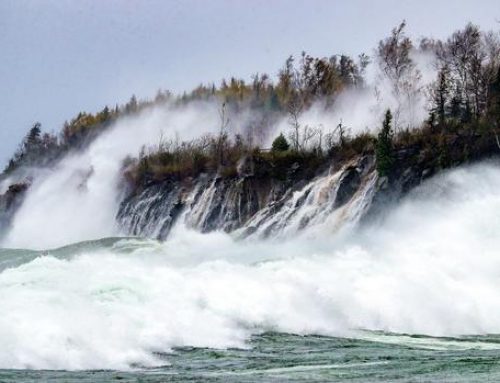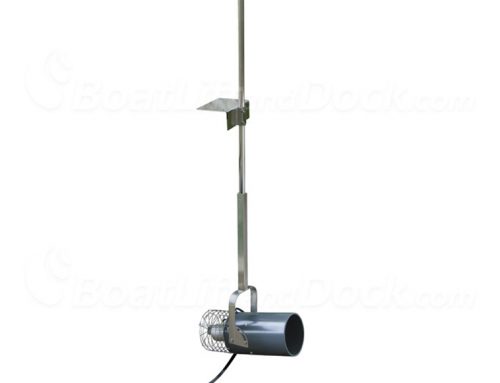Leveling cantilever lifts is done a little differently than leveling a traditional vertical freestanding lift. Using aftermarket “Lift Leveling Legs” which attach to your lift at various points, you can set your lift in a position where it remains level regardless of the slope that is underneath the lift. Declining slopes of lake bottoms are a difficult challenge for cantilever lifts to get around as they are designed more for very flat, hard bottoms with little change in water depth. Cantilevers, with their long bottom rails have a hard time making direct contact with the bottom at every point along those rails if they are placed on a slope. To combat this people use pairs of lift leveling legs to bridge that distance and provide the security and support the lift needs to remain level and function properly as designed.
If you have a gently sloping lake bottom many people need just one pair of short lift leveling legs. Placed at the rear of the bottom rails, the legs ensure the lift has the support it needs at the back where the motor and much of the weight of the boat will be. Sometimes the slope that you are trying to overcome is more pronounced and requires a longer pair of legs so chose a pair that is 3 or for 4 feet long as opposed the shorter 1 or 2 feet models.
In more drastic situations multiple pairs of legs at various lengths will be needed to overcome a steep drop off in depth. You are going to want to distribute the weight of the cantilever lift as best as you can so be sure to put the first pair at the back, then split the distance between them and the front of the lift, this is will you will put your shorter pair. Only in the most extreme situations will more than two pairs of legs be needed but if you find yourself with this problem you may need 3 or even 4 pairs of legs at various lengths to keep your lift level. The process for attaching them is the same as above, first attached the longest ones in the rear, split the difference by placing the second pair towards the middle and then place your remaining pairs halfway between the back legs and the middle legs or halfway between the middle legs and where the front of the lifts rails are making contact with the lake bottom.
Remember that cantilever lifts work best on shallow lakes with hard, flat bottoms so if you are purchasing a lift make sure to inspect your property thoroughly before making your decision between a cantilever design and a freestanding vertical lift or a floating option.






